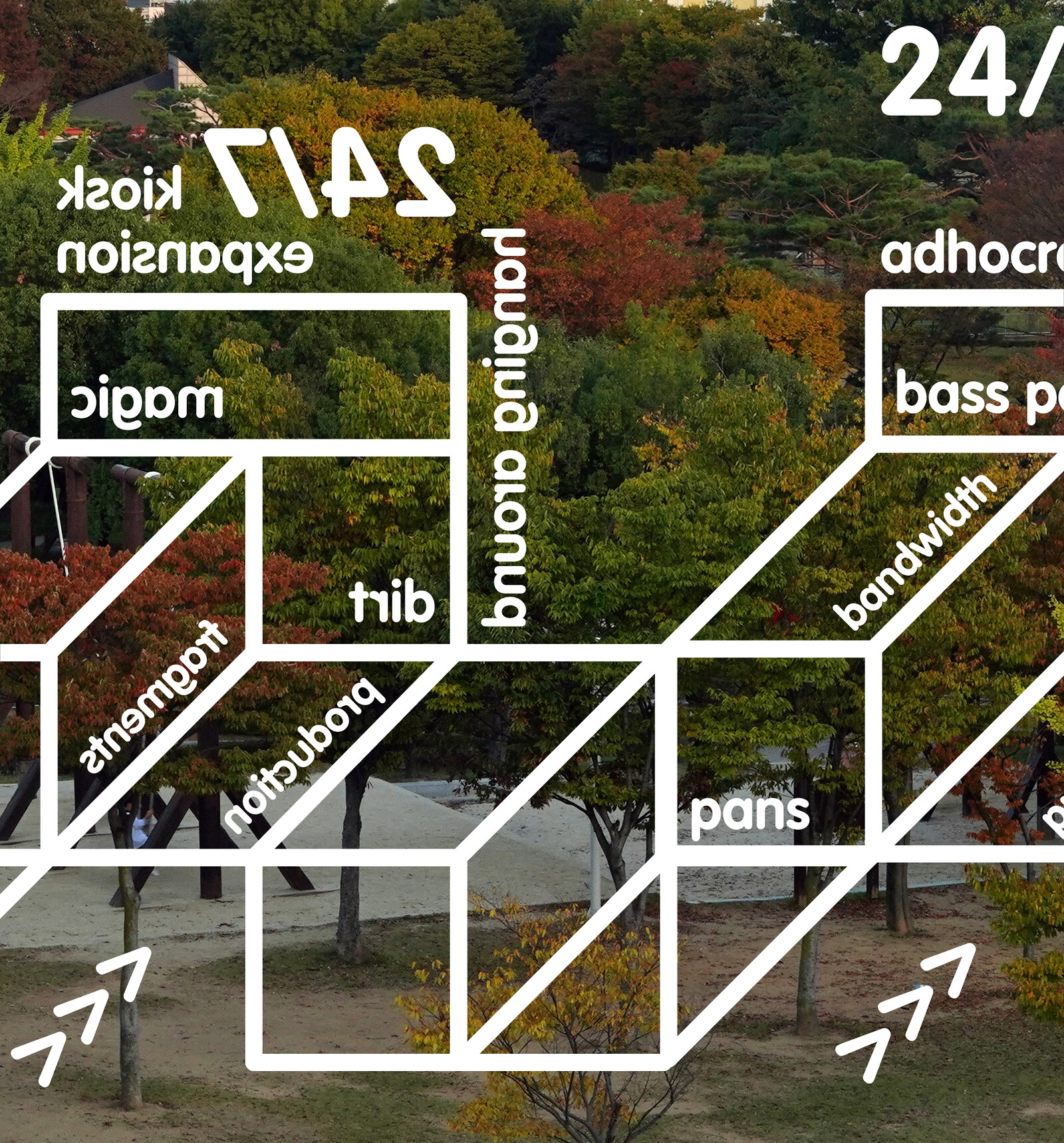The Work Life Effect
February 25–June 27, 2021
The Work Life Effect is Liam Gillick’s first major solo museum exhibition in Asia. The exhibition continues the artist’s interest in questions of production, various modes of work and an endless search for a contemporary abstraction. The title directly refers to this—alluding to the complex tensions between work and life. The Work Life Effect proposes a zone where we sense the effects of the merging of work and life that has accelerated in the digital period and under the conditions of the Covid-19 pandemic. The exhibition does not directly illustrate such processes, rather it evokes a twilight mood of lights, forms and affects that bring forward how emotional and formal aspects of perception and experience are altered when we are subjected to new modes of mediated existence.
The exhibition suggests both exterior and interior spaces. In these zones we see large equations glowing on the walls, as if the analytical data surrounding us were visible—replacing the neon lights of a city at night with tools to calculate human happiness. Lights moving up and down operate as signs to the entrance of the exhibition—creating waves of shadows that move while we remain still. Two large architectural spaces are constructed inside the main room—with all other museum walls removed. They operate as semi-autonomous zones—neither within or without the museum itself. These two spaces within a space contain two paradoxical aspects of the artist’s work, namely abstraction in tension with a poetics of social life, experience and struggle. Both spaces resemble store fronts or enormous display cases. Brightly lit they appear to have glazed facades. However the glass is an illusion and one can easily step into them. The first contains a new series of abstract “fins” and “horizons.” These abstract wall-based works allude to distinctly contemporary elements we find in the built world of architecture, industry and communication. The works have evolved from an earlier focus on false ceilings and dividing screens to evoke the cooling fins, server arrays and vents that are the circulatory organs of the built world.
The second contains Factories in the Snow (Il Tempo Postino) (2007), an important work that comprises a digital player piano and a snow machine. The piano stands alone as black snow falls. What can be heard is the artist attempting to play from memory the folk song used to announce the beginning of the 1974 Portuguese Revolution.
An important aspect of the exhibition extends to the lobby of the museum and the children’s education area to the rear of the building. Large graphic works on the windows will provide a new glossary of terms to describe contemporary working conditions. Another graphic on the windows of the Museum Lounge shows a stylised Gwangju Kiosk, open 24/7 and selling many new “products” such as production, pain, fire and team work. These spaces will be furnished with low tables and stools that provide spaces for informal gathering, study and research. A program of education, performance and video streaming will be produced in these spaces and in the exhibition itself.
Liam Gillick is an artist based in New York. His work exposes the dysfunctional aspects of a modernist legacy in terms of abstraction and architecture when framed within a globalized, neo-liberal consensus, and extends into structural rethinking of the exhibition as a form. Gillick’s work has been included in numerous important exhibitions including documenta and the Venice, Berlin and Istanbul Biennales—representing Germany in 2009 in Venice. Solo museum exhibitions have taken place at the Museum of Contemporary Art in Chicago, the Museum of Modern Art in New York and Tate in London. Gillick’s work is held in many important public collections including the Centre Pompidou in Paris, the Guggenheim Museum in New York and Bilbao, Tate, London and the Museum of Modern Art in New York. Over the last 25 years Gillick has also been a prolific writer and critic of contemporary art. Throughout this time Gillick has extended his practice into experimental venues and collaborative projects with artists including Philippe Parreno, Lawrence Weiner, Louise Lawler, Adam Pendleton and the band New Order, in a series of concerts in Manchester, Turin and Vienna.



